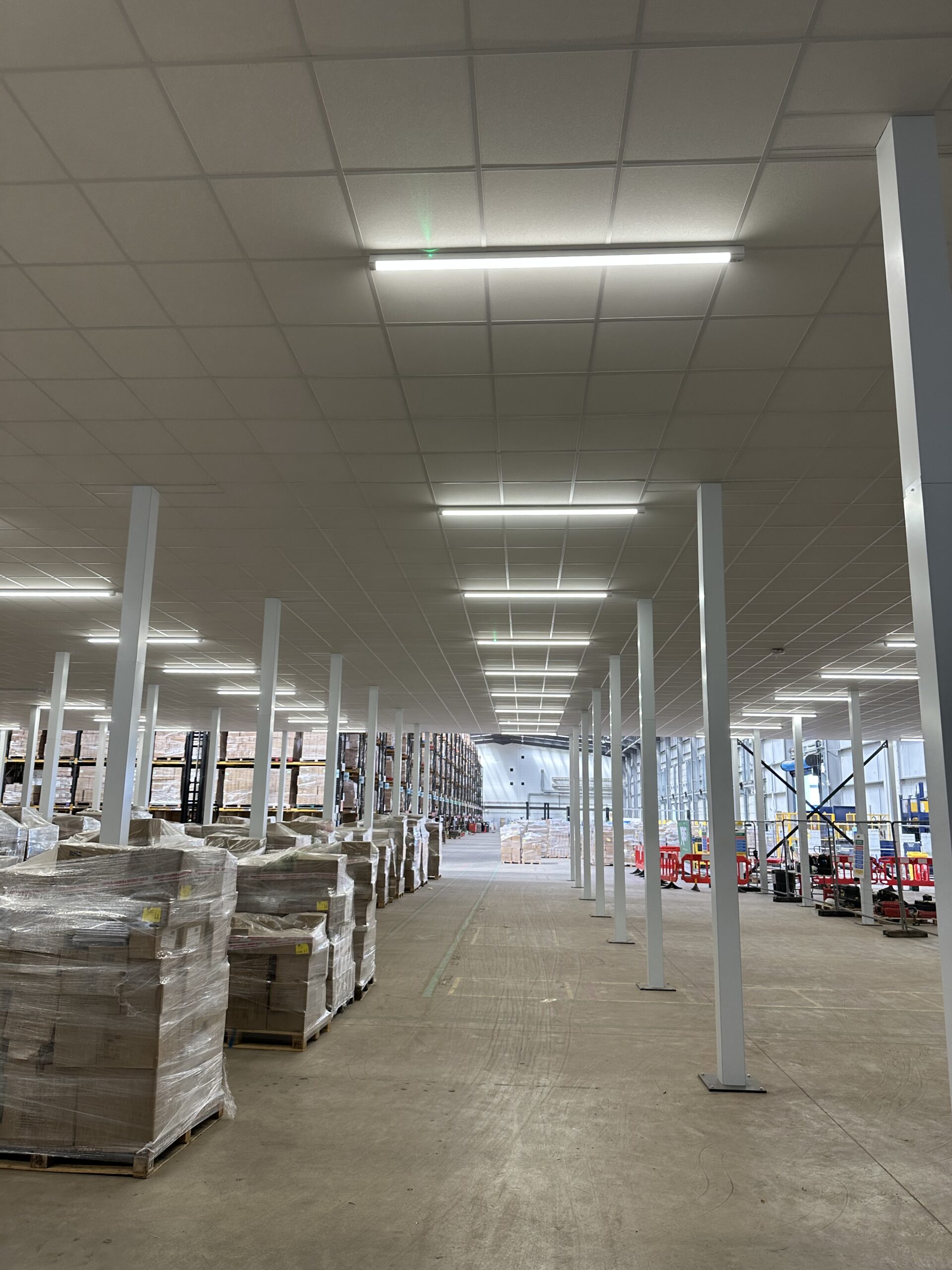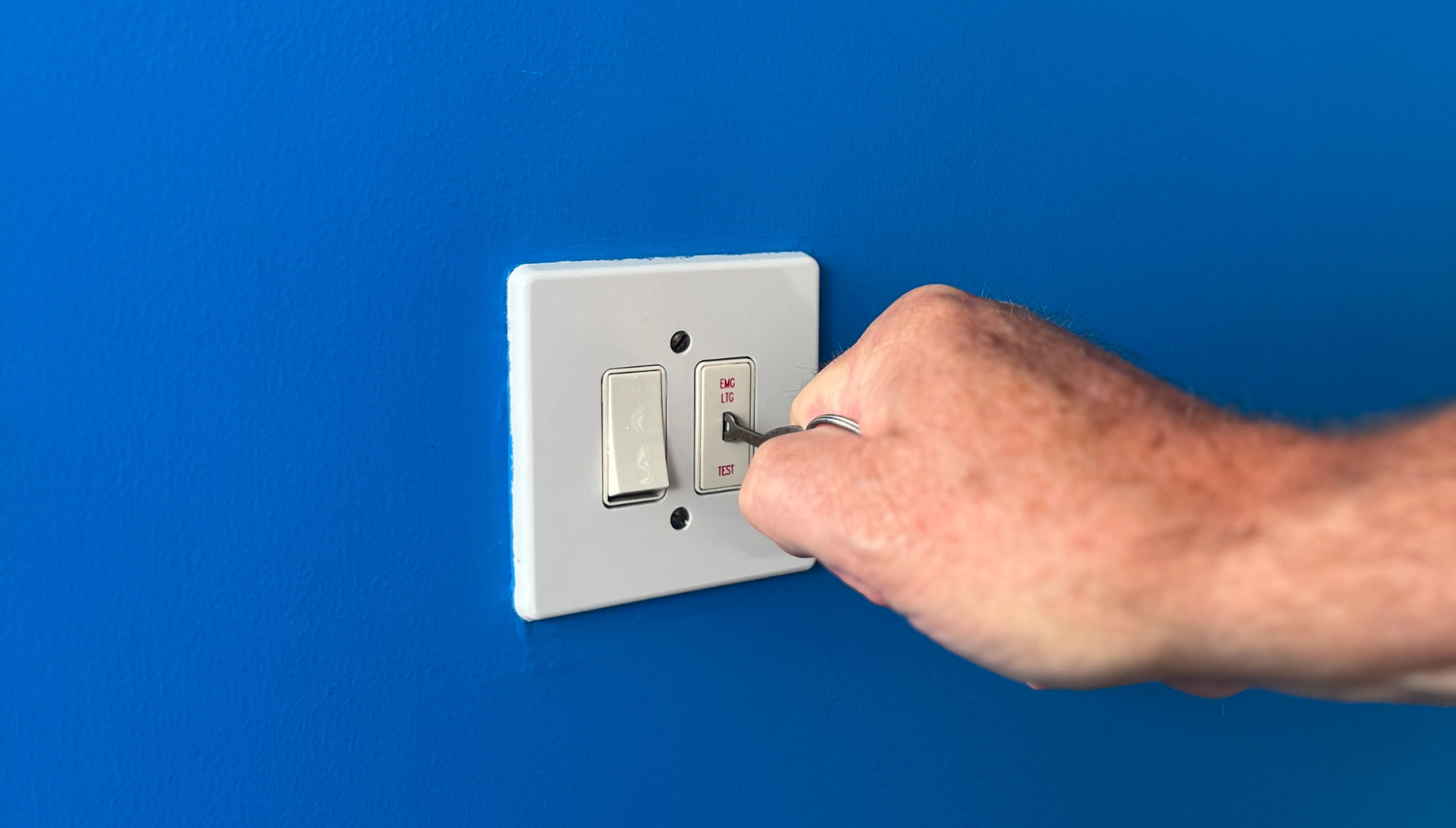Emergency lighting is one of the most important safety systems in any building. In the event of a power cut, fire, or other emergency, it gives people a clear route to safety and the confidence to move quickly and calmly. What many businesses don’t realise is that emergency lighting isn’t simply “good practice.” It’s a legal requirement under UK fire safety law.
With the Building Safety Act 2022 and BS 5266-1, the rules are clearer and stricter than ever. Owners and managers are now directly accountable for ensuring systems are properly designed, tested, and maintained, with full records kept. Failure to comply doesn’t just risk fines or prosecution, it risks lives.
This piece looks at what the law requires, why compliance matters, and how Nene Electricals’ fully NICEIC-trained and approved team can help you stay safe, compliant, and audit-ready.
Your Legal Duty: What the Law Requires and Why
Think of emergency lighting as more than just “backup lights.” It’s a life safety system designed to:
- Guide people towards exits
- Reduce panic when things go wrong.
- Highlight firefighting equipment, call points, first-aid stations, and points of emphasis.
The legal framework is built around three core areas:
- BS 5266-1: sets out how systems must be designed, installed, and maintained.
- EN 50172: covers the testing, inspection, and operational requirements.
- The Building Safety Act 2022: ensures owners, managers, contractors, and designers are legally responsible for building safety, with criminal liability where standards are not met. For emergency lighting, this means clear, accessible records of design, testing, and maintenance must be kept to prove compliance and ensure occupant safety
The message is simple: having emergency lights is not enough. They must be designed, installed, tested, and documented correctly, or your business risks serious consequences.

Emergency Lighting: Designed for Safety
No two buildings are the same, and neither are their emergency lighting needs.
A hospital, for example, has very different requirements from a warehouse or office.
That’s why design needs to consider:
- Risk levels: high-risk areas may need higher illumination and faster response.
- Scale and complexity: larger or multi-storey buildings need carefully planned coverage.
- User profile: including visitors, vulnerable occupants, or staff working night shifts.
- Lifecycle costs: ensuring systems are not just compliant, but cost-effective to run and maintain.
- Maintenance strategy: access for servicing and availability of spare parts.
At Nene Electrical, our NICEIC-approved designers balance safety, risk, and cost to create systems that meet BS 5266-1 and fit your building’s unique needs.
Escape Route Lighting: Critical in Every Sector
In an emergency, escape routes must be clear, visible, and easy to follow. Whether in an office, warehouse, hospital, school, or data centre, the requirements are universal.
Under BS 5266-1 and BS EN 1838, requirements include:
- Minimum 1 lux along the centre line of escape routes up to 2m wide.
- Illumination at points of emphasis such as final exits, stairways, intersections, and changes in floor level.
- Visibility of firefighting equipment, call points, first aid stations, and safety signage.
- Response time of 50% illumination within 5 seconds, 100% within 60 seconds.
- Escape Route Lighting must stay on for a minimum duration of 1 hour, typically designed for 3 hours.
- Even distribution of light without glare or sharp contrasts.
These requirements ensure people can move confidently and avoid hold-ups in an emergency.
At Nene Electrical, we design escape route lighting with one goal in mind, making sure people can get out quickly, safely, and with confidence.
Testing That Keeps You Compliant
Design alone isn’t enough; regular testing is a legal requirement.
- Monthly functional tests: usually carried out by the building owner, facilities manager, or someone they appoint as the responsible/competent person. These checks confirm each unit switches to battery and recharges.
- Annual full-duration test (3 hours): must be completed by a qualified electrician to prove full performance.
- Record keeping: every test, fault, and fix must be logged for compliance.

At Nene Electrical, our NICEIC-approved team makes this simple with three options:
- Manual testing: low upfront cost but labour-intensive.
- Self-testing luminaires: built-in automated checks; however, they still require a manual check-in.
- Fully automated systems: remote monitoring, digital logbooks, and instant fault alerts. They involve a higher initial investment but deliver long-term savings and require less maintenance.
Whatever option you choose, all testing must still be recorded, and a responsible/competent person is legally required to oversee records and ensure any issues are resolved.
Why Choose Nene Electrical?
When it comes to emergency lighting, competence matters. Here’s why businesses trust us:
- NICEIC Approved: our installers and designers are fully NICEIC trained and approved, ensuring compliance with the highest industry standards.
- End-to-end service: from consultation and design through to installation, upgrades, testing, and maintenance.
- Tailored solutions: we design for your building’s specific risks, not just generic standards.
- Audit-ready records: clear documentation to satisfy inspectors and insurers.
- Future-proof systems: energy-efficient LEDs, self-test, and automated options to keep costs and risks down long term.
- Responsive support: fast repairs and servicing to keep systems reliable year-round through a maintenance contract.
Whether you need a new design, installation, testing, servicing, or guidance on your legal duties, our team is here to help.
Contact the team today and ensure your business is always safe, compliant, and prepared.
📞 01327 300 456 | 📧 hello@nene-electrical.co.uk
